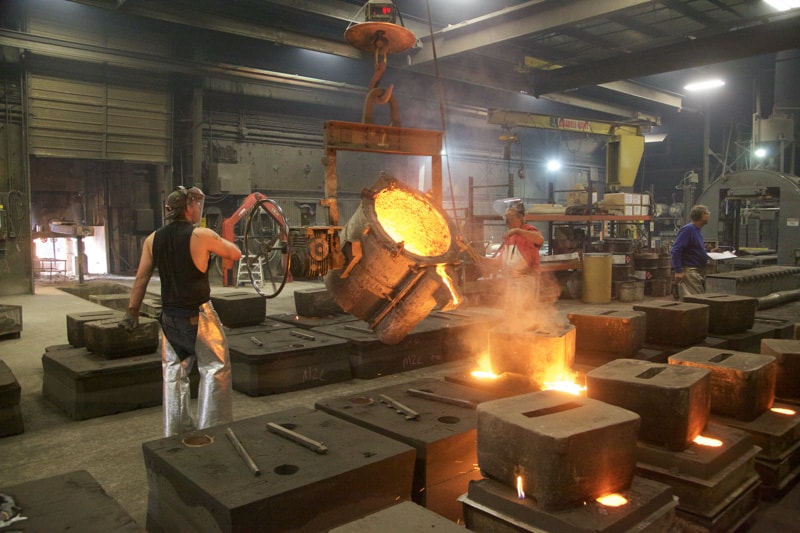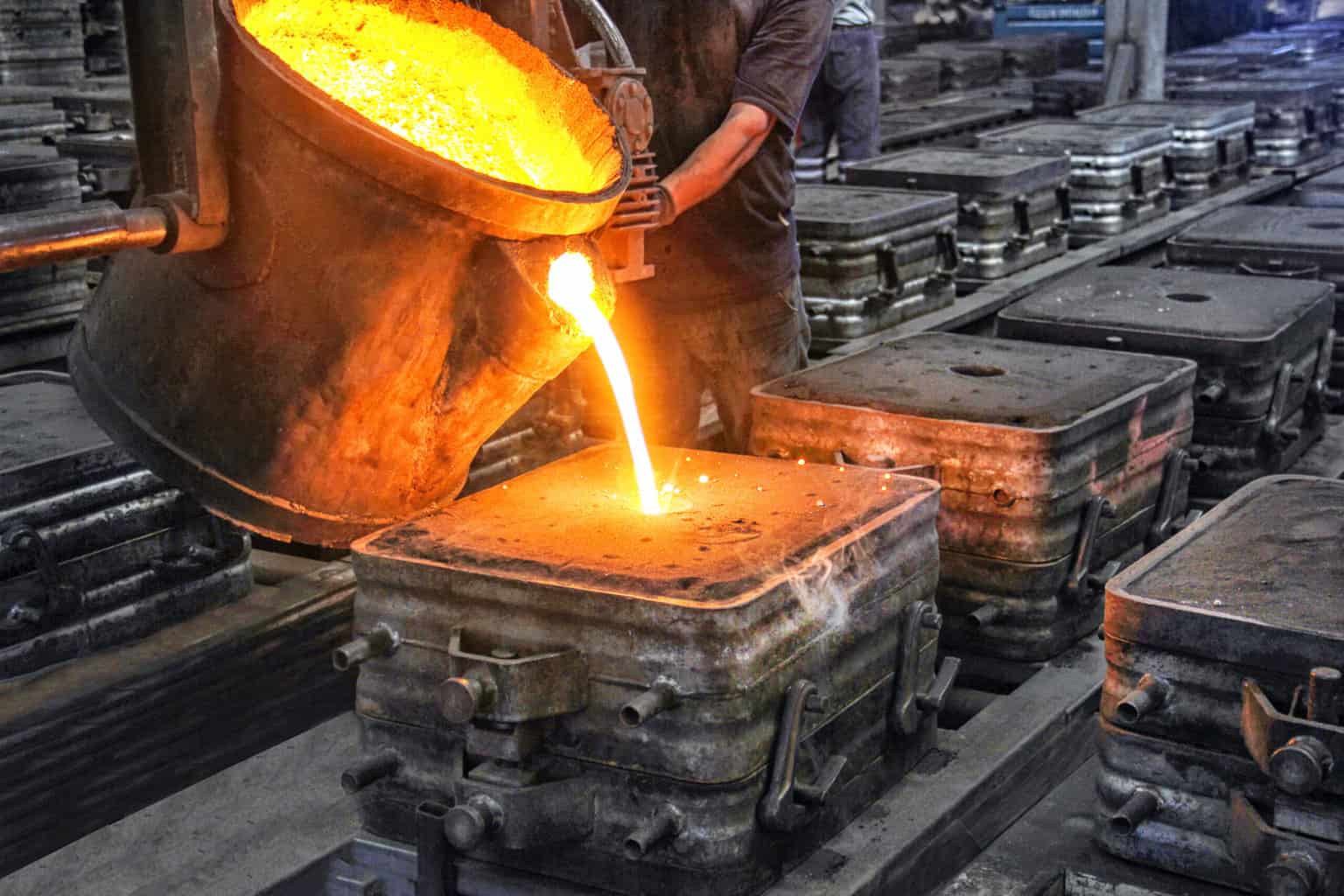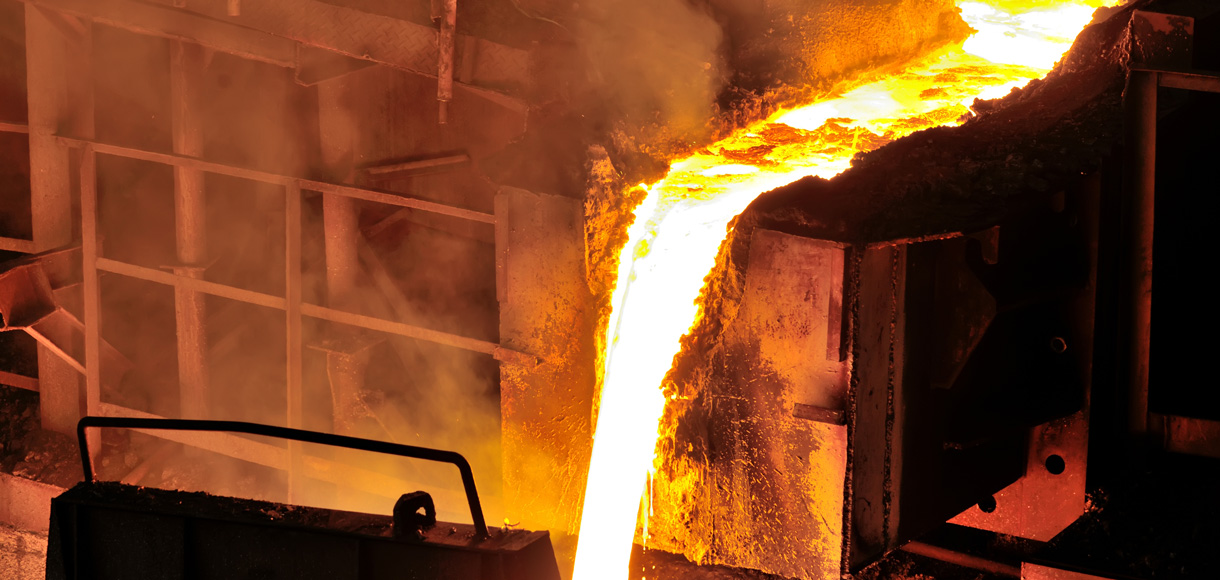Top 5 Errors to Avoid When Working With a Casting Foundry
Wiki Article
Recognizing the Procedures and Advantages of a Casting Shop
Casting factories play a necessary duty in modern manufacturing. They make use of different methods to transform liquified materials right into strong forms, customized for certain applications. Each approach, from sand Casting to pass away spreading, uses one-of-a-kind advantages, impacting markets like auto and aerospace. Understanding these processes exposes not only their useful advantages yet also the developments driving their evolution. What effects do these innovations hold for future manufacturing methods and sustainability efforts?Summary of Casting Procedures
Although numerous casting processes exist, they all share the essential principle of transforming liquid product right into strong types. This makeover is achieved through pouring liquified compounds into molds, where they cool and strengthen right into desired shapes. Different processes satisfy details products and applications, consisting of metal, plastic, and ceramic spreading. Pass away Casting is frequently used for metals, using high stress to guarantee detailed layouts and smooth finishes. Financial investment casting, additionally called lost-wax spreading, allows for intricate layouts and is appropriate for complex geometries. Various other methods, such as gravity and centrifugal casting, exploit the pressure of gravity or turning to load mold and mildews properly. Each procedure has distinct benefits relating to scalability, accuracy, and material compatibility, causing varied applications across sectors. Recognizing these procedures is crucial for selecting the most proper approach for a provided project, guaranteeing the finest lead to manufacturing and production.Sand Spreading: Applications and methods

As soon as the mold and mildew is ready, liquified metal is put right into the tooth cavity, where it solidifies and cools. After cooling, the sand is removed, revealing the actors object. Sand Casting is preferred for its cost-effectiveness, convenience, and capability to create both small and big quantities. Additionally, it fits a vast array of metals, including light weight aluminum, iron, and bronze. Generally, sand Casting continues to be an essential technique in Foundry procedures, enabling suppliers to fulfill varied manufacturing requires successfully.
Financial Investment Casting: Accuracy and Detail
Investment Casting is an extremely specific production process that produces comprehensive parts with using a wax pattern. This method is applicable throughout various markets, including aerospace, automotive, and clinical, where accuracy and surface area coating are critical. Comprehending the ins and outs of financial investment Casting can illuminate its benefits in producing top notch components and complex geometries.
Refine Review
When considering the details of casting processes, financial investment Casting stands apart for its capability to create complex shapes with impressive accuracy and information. This technique involves developing a wax pattern, which is coated in a ceramic covering and subsequently heated to remove the wax, leaving a hollow mold and mildew. As soon as the mold and mildew is prepared, liquified steel is gathered, loading the detailed tooth cavities. The cooling process permits the steel to solidify, after which the ceramic covering is escaped, disclosing the ended up component. This method is especially useful for producing premium parts with smooth surfaces and limited resistances. Financial investment Casting decreases product waste and permits the incorporation of complex geometries that are challenging to attain via various other casting methods.Applications and Industries
Although investment Casting is usually related to the aerospace and automotive industries, its versatility encompasses a wide variety of applications across numerous industries. This approach is especially important in producing complex components for clinical gadgets, where precision is vital for capability and safety. In addition, the energy field gain from financial investment Casting in the manufacturing of components for turbines and pumps, showcasing its reliability under extreme problems. The electronic devices industry also employs financial investment Casting to create complex real estates and connectors that call for fine detail. Moreover, the protection field utilizes this Casting strategy for producing sturdy, light-weight parts. Overall, financial investment casting's capability to achieve high degrees of detail and accuracy makes it an essential procedure in multiple markets.Die Spreading: Speed and Efficiency
Pass away Casting is acknowledged for its rapid manufacturing cycle, permitting suppliers to create parts quickly and effectively. This approach not only guarantees high accuracy in the ended up items yet additionally adds to a cost-effective manufacturing procedure. As an outcome, pass away Casting sticks out as a favored option in various sectors looking for to optimize manufacturing without compromising top quality.Fast Production Cycle
As manufacturers seek to improve efficiency, the quick manufacturing cycle fundamental in die Casting becomes a considerable benefit. This process enables for the fast manufacturing of components, allowing makers to fulfill high need effectively. The capability to create huge quantities in a brief duration decreases preparations, improving the overall manufacturing process. Furthermore, automated die Casting makers operate at a broadband, further accelerating outcome while preserving consistent top quality. This efficiency not just decreases labor prices but also optimizes resource use, adding to more sustainable production methods. By utilizing rapid manufacturing cycles, business can react swiftly to market changes, making certain competitiveness and cultivating development in product development. Generally, die spreading's rate is a crucial element in modern-day manufacturing success.High Accuracy Parts
The fast production cycle in die Casting not just boosts speed but also considerably adds to the production of high accuracy parts. This process entails infusing molten metal into a mold and mildew under high pressure, permitting for limited resistances and intricate styles. Because of this, elements produced with die Casting display very little variant in measurements, guaranteeing uniformity across big sets. This precision is especially beneficial in industries such as auto and aerospace, where exact specs are vital. Furthermore, the high-speed nature of die Casting lowers the time required for manufacturing while maintaining quality criteria. As a result, producers can count on pass away casting to deliver exact components efficiently, satisfying the needs of contemporary design without compromising on performance or integrity.Cost-Effective Production Process
Maximizing production efficiency, pass away Casting sticks out as an affordable production process that significantly reduces labor and check material costs. This strategy utilizes liquified steel, which is infused into a mold and mildew under high stress, enabling fast production of complex shapes with very little waste. The high-speed nature of die Casting not just increases the production timeline however additionally assures consistency across large volumes, making it optimal for automation. On top of that, the durability of the molds made use of result in much longer manufacturing runs without the demand for regular replacements, thus decreasing costs. Subsequently, die casting arises as a recommended option for makers seeking to stabilize quality and price while meeting high need in different markets.Advantages of Using Casting Shops
Countless advantages develop from using Casting shops in producing processes. One significant advantage is the ability to produce intricate forms and intricate designs that might be impossible or challenging to attain through various other techniques. This adaptability permits better layout creative thinking and development. In addition, casting foundries can fit a wide range of materials, including different metals and alloys, which broadens the possibilities for product applications.An additional advantage is the scalability of production. Factories can efficiently create both tiny and big quantities, making them appropriate for diverse markets, from auto to aerospace. The Casting procedure likewise decreases product waste, as excess product can often be recycled within the shop, adding to sustainability efforts.
Furthermore, casting shops often have actually developed expertise and progressed modern technology, making certain that they can fulfill specific manufacturing requirements while enhancing operational efficiency. These advantages collectively improve the general performance of making procedures.
Quality Control in Casting Production
Effective quality control in Casting production is crucial for making certain that the last products satisfy the called for requirements and standards. This procedure includes organized tracking and assessment at numerous stages of manufacturing, from resources selection to the last evaluation of cast parts. Key techniques include product testing, dimensional inspections, and thorough assessment of surface coatings.Casting factories frequently execute statistical process control (copyright) methods to recognize variations and maintain consistency in manufacturing - Casting Foundry. By utilizing sophisticated technologies such as electronic dimension tools and automated evaluation systems, foundries can boost accuracy and minimize human mistake
Normal audits and adherence to market standards, such as ISO certifications, even more strengthen the quality control framework. Eventually, rigorous quality assurance not only minimizes problems and waste yet also boosts consumer fulfillment and count on, placing the Foundry as a dependable provider in the open market.

Innovations Shaping the Future of Casting
As the Casting industry develops, innovations are essentially reshaping production procedures and boosting effectiveness. Advanced innovations such as additive production, or 3D printing, make it possible for the fast development of complex mold and mildews, decreasing preparations and material waste. Automation is likewise playing an essential function; robotics improve repeated tasks, improving precision and reducing labor costs.Furthermore, the integration of fabricated knowledge and equipment knowing enhances the predictive abilities of foundries, enabling real-time high quality monitoring and process optimization. These innovations promote earlier discovery of potential problems, reducing scrap prices.
Sustainability is one more crucial consideration driving advancement, with lots of factories embracing energy-efficient techniques and green products. The change toward circular economy concepts urges recycling and reusing materials, lowering ecological effect.
Collectively, these developments not only boost functional effectiveness but also place the Casting market for a more lasting and highly sophisticated future. Casting Foundry.
Frequently Asked Questions
What Products Are Typically Used in Casting Foundries?
Usual materials used in casting shops include steels such as bronze, iron, and aluminum, in addition to different alloys. Additionally, sand and material are frequently used for molds, improving the Casting process and the high quality of finished items.How much time Does the Casting Process Commonly Take?
The Casting process typically takes numerous hours to days, depending upon variables such as the complexity of the mold and mildew, the material made use of, and the cooling time required. Each project has one-of-a-kind demands influencing period.What Industries Largely Use Casting Foundry Solutions?
Various markets make use of casting Foundry services, including auto, building and construction, production, and aerospace. These industries count on casting for generating complex metal parts, making certain sturdiness and accuracy in their items, boosting overall efficiency and performance.Are There Environmental Worries Related To Casting Shops?
Environmental concerns connected to casting factories consist of air contamination from exhausts, waste monitoring concerns, and source intake. These factors impact local ecological communities, prompting industry stakeholders have a peek at these guys to look for lasting practices and technologies to reduce unfavorable impacts.Exactly How Do Casting Factories Make Sure Employee Security?
Casting factories apply extensive security procedures, including personal protective devices, normal training, and adherence to market laws. Casting Foundry. go to my blog They perform regular security audits to determine risks, guaranteeing a safer working environment for their staff members and decreasing threats
Report this wiki page